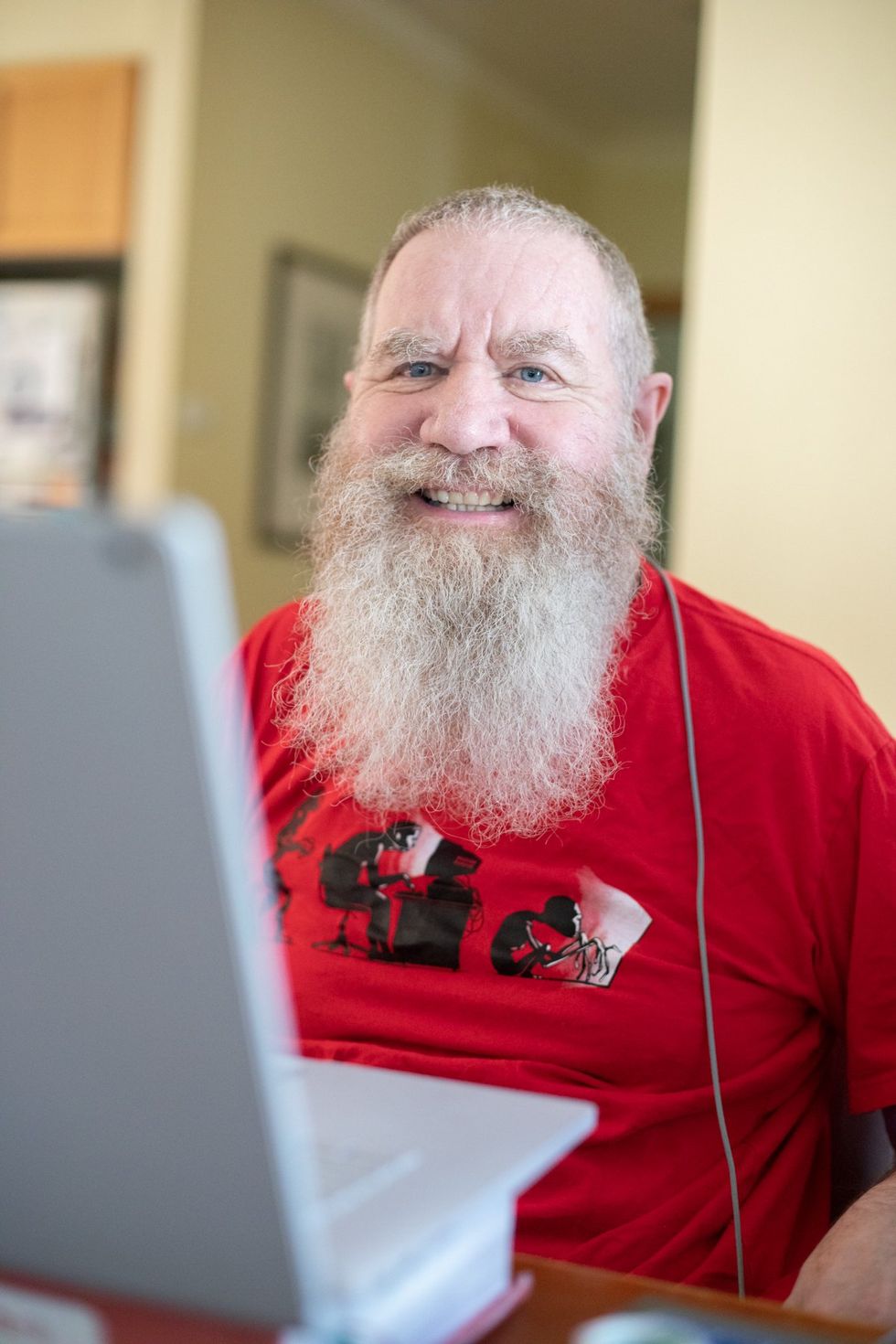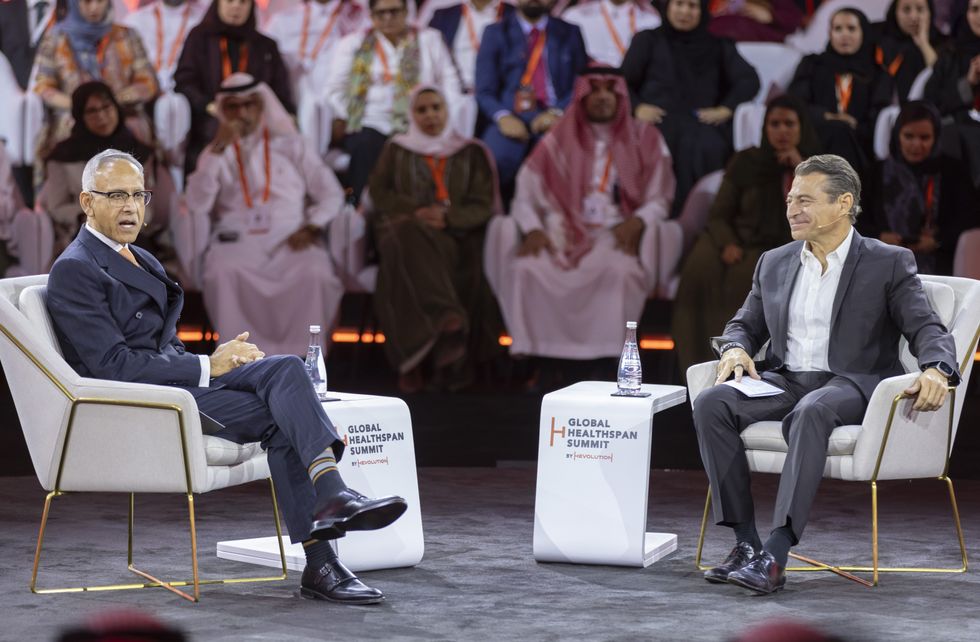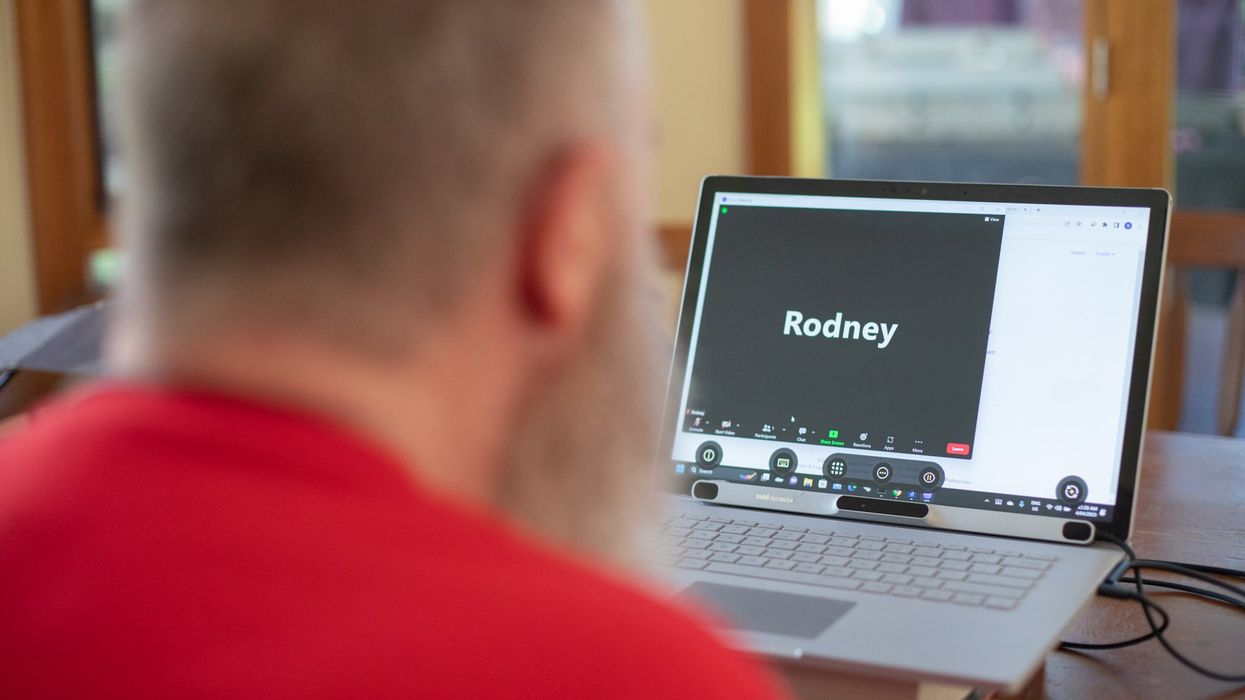Worried About Eating GMOs? That’s Not the Real Problem

Farmers harvest rice in a field.
The 21st century food system is awash in ethical issues. To name just a handful: There's the environmental impacts of farming, the human health effects of diets based on animal products and processed foods, the growing clamor around food waste, and the longstanding concerns about agricultural labor. The last decade has seen the emergence of "ethical consumption," as people have been encouraged to avoid products that are associated with animal cruelty or unfair to farmers.
Misguided concerns about GMOs are missing the point altogether and distracting from a far more substantive ethical problem.
But consumers have never been so ignorant about where food comes from, and they are vulnerable to oversimplifications and faulty messaging. Many would include the first generation of crops from agricultural applications of recombinant DNA methods for genetic improvement—so called GMOs—among the foods they should avoid for ethical reasons. Unfortunately, these misguided concerns are missing the point altogether and distracting from a far more substantive ethical problem.
As we stand on the precipice of a new era in food and biotechnology – crops and animals with genomes altered through gene editing – it is more important than ever to let go of unnecessary fears and to pay attention to the real hazards of agricultural innovation.
But first, as a bioethicist with almost 40 years of experience working on issues in the food system, let me stress the overall context and rationale for trying to make changes in plant and animal genetics. Doing so, whether through conventional breeding or biotechnology, allows producers to meet the challenges of seasonal climate differences and increase yields.
And just because a food was created through ordinary plant breeding vs. genetic modification does not automatically make it safe. Things can and do go wrong in ordinary plant breeding, such as with potatoes and tomatoes. These both produce toxins in the green parts of the plant, and breeders exercise caution to ensure that toxins aren't transferred to edible parts.
Despite real risks, there is no regulatory oversight that protects us from these known hazards. We rely on the professional ethics of agricultural scientists. And GMOs are, in comparison, much more carefully tested and regulated. The claim that they are "unregulated" is just false.
We should not ignore the role that all gene technologies have played in displacing small farmers, depleting rural communities, and shifting economic control.
I do want to shift the public's attention away from the anti-GMO debate to more substantive questions about contemporary agriculture that really have little to do with where the genes in their food came from, or how they got there.
No matter how important genetic improvements might be in terms of total global food production, we should not ignore the role that all gene technologies—including breeding—have played in displacing small farmers, depleting rural communities and shifting economic control of agriculture into a small circle of powerful actors. Globally, these changes have had disproportionately harmful effects on women and people of color.
Combined with mechanization and chemicals, gene technologies have freed planters from their dependence on impoverished and poorly educated field hands, but they did nothing to help the fieldworkers transition to a new line of work. These are the real problems that deserve the public's and the science community's attention, not the overly narrow worries about eating GMOs.
But these problems are viewed as "not ours" by agricultural insiders, and they continue to be ignored by scientists whose focus is solely on biology. Many of the concerns that are today viewed as "urban problems" or "social issues" have origins in agriculture. For example, in California tomatoes, the development of mechanical harvesting led to a rapid concentration of ownership and the displacement of thousands of field hands. In the South, similar technologies displaced black farmers working land owned by whites, causing migration to urban centers and unskilled jobs. I must fault the science community for a lack of willingness to even take the thrust of these more socially oriented critiques seriously.
The new suite of tools for genetic modification that go under the name "gene editing" promise greater precision. They should allow scientists to target the locus for new genes in a plant or animal genome, and minimize the chance for causing unwanted impacts on gene functioning. This added precision is reducing some of the uncertainties in the mind of technology developers, and they have been expressing hope that their own confidence will be shared by regulators and by the public at large. In fact, the U.S. government recently issued a statement that gene-edited crops do not require additional regulation because they're just as safe as crops produced through conventional breeding.
It is indeed possible that the public doubts about genetically modified food will be assuaged by this argument. We can only wait and see. Whether or not gene editing will lead to more reflection about agriculture's complicity in problems of economic inequality or structural racism depends much more on the culture of the science community than it does on the technology itself.
New implants let paraplegics surf the web and play computer games
Rodney Gorham, an Australian living with ALS, has reconnected with the world, thanks to a brain-machine interface called the Stentrode.
When I greeted Rodney Gorham, age 63, in an online chat session, he replied within seconds: “My pleasure.”
“Are you moving parts of your body as you type?” I asked.
This time, his response came about five minutes later: “I position the cursor with the eye tracking and select the same with moving my ankles.” Gorham, a former sales representative from Melbourne, Australia, living with amyotrophic lateral sclerosis, or ALS, a rare form of Lou Gehrig’s disease that impairs the brain’s nerve cells and the spinal cord, limiting the ability to move. ALS essentially “locks” a person inside their own body. Gorham is conversing with me by typing with his mind only–no fingers in between his brain and his computer.
The brain-computer interface enabling this feat is called the Stentrode. It's the brainchild of Synchron, a company backed by Amazon’s Jeff Bezos and Microsoft cofounder Bill Gates. After Gorham’s neurologist recommended that he try it, he became one of the first volunteers to have an 8mm stent, laced with small electrodes, implanted into his jugular vein and guided by a surgeon into a blood vessel near the part of his brain that controls movement.
After arriving at their destination, these tiny sensors can detect neural activity. They relay these messages through a small receiver implanted under the skin to a computer, which then translates the information into words. This minimally invasive surgery takes a day and is painless, according to Gorham. Recovery time is typically short, about two days.
When a paralyzed patient thinks about trying to move their arms or legs, the motor cortex will fire patterns that are specific to the patient’s thoughts.
When a paralyzed patient such as Gorham thinks about trying to move their arms or legs, the motor cortex will fire patterns that are specific to the patient’s thoughts. This pattern is detected by the Stentrode and relayed to a computer that learns to associate this pattern with the patient’s physical movements. The computer recognizes thoughts about kicking, making a fist and other movements as signals for clicking a mouse or pushing certain letters on a keyboard. An additional eye-tracking device controls the movement of the computer cursor.
The process works on a letter by letter basis. That’s why longer and more nuanced responses often involve some trial and error. “I have been using this for about two years, and I enjoy the sessions,” Gorham typed during our chat session. Zafar Faraz, field clinical engineer at Synchron, sat next to Gorham, providing help when required. Gorham had suffered without internet access, but now he looks forward to surfing the web and playing video games.

Gorham, age 63, has been enjoying Stentrode sessions for about two years.
Rodeny Dekker
The BCI revolution
In the summer of 2021, Synchron became the first company to receive the FDA’s Investigational Device Exemption, which allows research trials on the Stentrode in human patients. This past summer, the company, together with scientists from Icahn School of Medicine at Mount Sinai and the Neurology and Neurosurgery Department at Utrecht University, published a paper offering a framework for how to develop BCIs for patients with severe paralysis – those who can't use their upper limbs to type or use digital devices.
Three months ago, Synchron announced the enrollment of six patients in a study called COMMAND based in the U.S. The company will seek approval next year from the FDA to make the Stentrode available for sale commercially. Meanwhile, other companies are making progress in the field of BCIs. In August, Neuralink announced a $280 million financing round, the biggest fundraiser yet in the field. Last December, Synchron announced a $75 million financing round. “One thing I can promise you, in five years from now, we’re not going to be where we are today. We're going to be in a very different place,” says Elad I. Levy, professor of neurosurgery and radiology at State University of New York in Buffalo.
The risk of hacking exists, always. Cybercriminals, for example, might steal sensitive personal data for financial reasons, blackmailing, or to spread malware to other connected devices while extremist groups could potentially hack BCIs to manipulate individuals into supporting their causes or carrying out actions on their behalf.
“The prospect of bestowing individuals with paralysis a renewed avenue for communication and motor functionality is a step forward in neurotech,” says Hayley Nelson, a neuroscientist and founder of The Academy of Cognitive and Behavioral Neuroscience. “It is an exciting breakthrough in a world of devastating, scary diseases,” says Neil McArthur, a professor of philosophy and director of the Centre for Professional and Applied Ethics at the University of Manitoba. “To connect with the world when you are trapped inside your body is incredible.”
While the benefits for the paraplegic community are promising, the Stentrode’s long-term effectiveness and overall impact needs more research on safety. “Potential risks like inflammation, damage to neural tissue, or unexpected shifts in synaptic transmission due to the implant warrant thorough exploration,” Nelson says.
There are also concens about data privacy concerns and the policies of companies to safeguard information processed through BCIs. “Often, Big Tech is ahead of the regulators because the latter didn’t envisage such a turn of events...and companies take advantage of the lack of legal framework to push forward,” McArthur says. Hacking is another risk. Cybercriminals could steal sensitive personal data for financial reasons, blackmailing, or to spread malware to other connected devices. Extremist groups could potentially hack BCIs to manipulate individuals into supporting their causes or carrying out actions on their behalf.
“We have to protect patient identity, patient safety and patient integrity,” Levy says. “In the same way that we protect our phones or computers from hackers, we have to stay ahead with anti-hacking software.” Even so, Levy thinks the anticipated benefits for the quadriplegic community outweigh the potential risks. “We are on the precipice of an amazing technology. In the future, we would be able to connect patients to peripheral devices that enhance their quality of life.”
In the near future, the Stentrode could enable patients to use the Stentrode to activate their wheelchairs, iPods or voice modulators. Synchron's focus is on using its BCI to help patients with significant mobility restrictions—not to enhance the lives of healthy people without any illnesses. Levy says we are not prepared for the implications of endowing people with superpowers.
I wondered what Gorham thought about that. “Pardon my question, but do you feel like you have sort of transcended human nature, being the first in a big line of cybernetic people doing marvelous things with their mind only?” was my last question to Gorham.
A slight smile formed on his lips. In less than a minute, he typed: “I do a little.”
Leading XPRIZE Healthspan and Beating Negativity with Dr. Peter Diamandis
XPRIZE founder and chairman Peter Diamandis launches XPRIZE Healthspan at an event on November 29.
A new competition by the XPRIZE Foundation is offering $101 million to researchers who discover therapies that give a boost to people aged 65-80 so their bodies perform more like when they were middle-aged.
For today’s podcast episode, I talked with Dr. Peter Diamandis, XPRIZE’s founder and executive chairman. Under Peter’s leadership, XPRIZE has launched 27 previous competitions with over $300 million in prize purses. The latest contest aims to enhance healthspan, or the period of life when older people can play with their grandkids without any restriction, disability or disease. Such breakthroughs could help prevent chronic diseases that are closely linked to aging. These illnesses are costly to manage and threaten to overwhelm the healthcare system, as the number of Americans over age 65 is rising fast.
In this competition, called XPRIZE Healthspan, multiple awards are available, depending on what’s achieved, with support from the nonprofit Hevolution Foundation and Chip Wilson, the founder of Lululemon and nonprofit SOLVE FSHD. The biggest prize, $81 million, is for improvements in cognition, muscle and immunity by 20 years. An improvement of 15 years will net $71 million, and 10 years will net $61 million.
In our conversation for this episode, Peter talks about his plans for XPRIZE Healthspan and why exponential technologies make the current era - even with all of its challenges - the most exciting time in human history. We discuss the best mental outlook that supports a person in becoming truly innovative, as well as the downsides of too much risk aversion. We talk about how to overcome the negativity bias in ourselves and in mainstream media, how Peter has shifted his own mindset to become more positive over the years, how to inspire a culture of innovation, Peter’s personal recommendations for lifestyle strategies to live longer and healthier, the innovations we can expect in various fields by 2030, the future of education and the importance of democratizing tech and innovation.
In addition to Peter’s pioneering leadership of XPRIZE, he is also the Executive Founder of Singularity University. In 2014, he was named by Fortune as one of the “World’s 50 Greatest Leaders.” As an entrepreneur, he’s started over 25 companies in the areas of health-tech, space, venture capital and education. He’s Co-founder and Vice-Chairman of two public companies, Celularity and Vaxxinity, plus being Co-founder & Chairman of Fountain Life, a fully-integrated platform delivering predictive, preventative, personalized and data-driven health. He also serves as Co-founder of BOLD Capital Partners, a venture fund with a half-billion dollars under management being invested in exponential technologies and longevity companies. Peter is a New York Times Bestselling author of four books, noted during our conversation and in the show notes of this episode. He has degrees in molecular genetics and aerospace engineering from MIT and holds an M.D. from Harvard Medical School.
Show links
- Peter Diamandis bio
- New XPRIZE Healthspan
- Peter Diamandis books
- 27 XPRIZE competitions and counting
- Life Force by Peter Diamandis and Tony Robbins
- Peter Diamandis Twitter
- Longevity Insider newsletter – AI identifies the news
- Peter Diamandis Longevity Handbook
- Hevolution funding for longevity

XPRIZE Founder Peter Diamandis speaks with Mehmoud Khan, CEO of Hevolution Foundation, at the launch of XPRIZE Healthspan.
Hevolution Foundation

